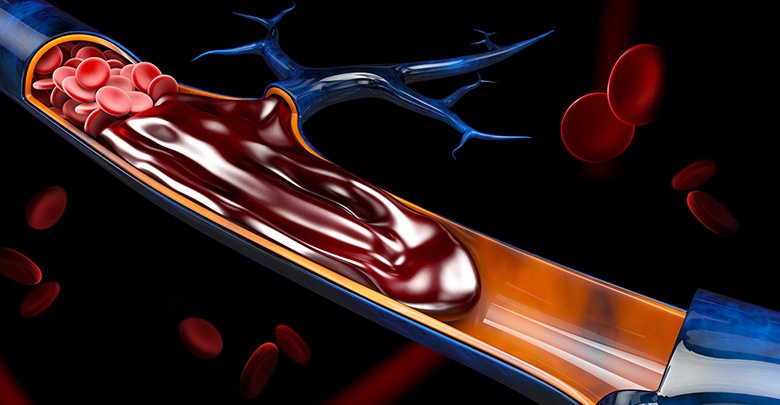Should I be worried about my Swollen Ankle?
A swollen ankle is a very common symptom. There are many possible underlying conditions and diseases, which may cause a swollen ankle

A swollen ankle is a very common symptom. There are many possible underlying conditions and diseases, which may cause a swollen ankle. It is therefore important to know when there is cause for concern, and you need to see a doctor with swollen legs, feet or ankles.
USE the OMH exclusive code "HEALTH15" to Save 15%Most importantly, it is crucial to differentiate between a swollen ankle caused by an injury or joint disease, and the more prevalent swollen ankle which is a manifestation of peripheral edema (swelling). In the latter case, the edema is the result of the accumulation of fluid in the lower body regions, typically in the legs, feet, and ankles. Due to gravity, the retained fluid and the swelling are more noticeable in the lower body regions.
Swelling in the legs, feet and ankles is usually not, in itself, a serious condition and it doesn’t cause any further health risks. However, a swollen ankle may be one of the signs of a serious underlying health condition. In this case it is important to get an immediate diagnosis and approprtiate treatment by medical professionals.
The possible causes of a swollen ankle
In general, it is important to note that peripheral edema (swelling) is more likely to occur in the elderly. This is due to the fact that the underlying primary conditions – such as cardiovascular diseases, chronic venous insufficiency, and other chronic diseases – which may cause edema, are more prevalent in that age group.
Furthermore, it is also important to differentiate between one-sided or both- sided edema. This differentiation can help to distinguish between the possible causes and underlying diseases.
Lifestyle related, and other common causes of ankle swelling
- Pregnancy – changes in body weight, hormonal status and circulation, especially in the second and third trimesters of pregnancy, very often cause lower body edema.
- Hormonal fluctuations – different levels of the hormones estrogen and progesterone during a normal menstrual cycle may also influence blood circulation and may lead to edema.
- Being overweight – a high BMI status, in other words being overweight or obese, especially if extreme, leads to decreased circulation in the lower extremities and this often results in edema.
- Working in standing or sitting positions – muscles play a very important role in assisting the heart to pump the blood and lymph up back towards the heart. When standing or sitting for long periods of time, the muscles are relatively inactive possibly which can lead to fluid retention with edema.

Medications which may cause lower body edema
The most common medications which may affect blood circulation by influencing the viscosity (thickness) of the blood are:
- nonsteroidal anti-inflammatory drugs (NSAIDs) – such as aspirin or ibuprofen.
- some antidepressants – including monoamine oxidase inhibitors or tricyclic antidepressants
- hormones – estrogens and also testosterone
Other medical conditions causing swollen ankle
- Chronic venous insufficiency (CVI)
When the veins are not able to effectively pump blood back towards the heart, different symptoms such as varicose veins, swelling, edema or possibly even ulceration develop. Most often, the impaired venous function is due to ineffective vein valves. This can be treated by a medical specialist. - Blood clot or thrombosis in the leg
A blood clot or thrombis is a clump of blood which can form either in the veins or in the arteries. Commom sites where blood clots occur are in the lower extremities. Both venous and arterial thrombosis are very serious medical conditions, which requre immediate medical attention. In particular, a venous thrombosis can dislodge from the lower extremity vein, and travel towards other organs, potentially causing a life threatening situation. An example would be a pulmonary embolism, which is a blood clot in the lungs. Therefore, it is of the utmost importance to recognize the symptoms of a blood clot in the leg. The symptoms of a deep vein thrombosis may include a swollen ankle, edema, pain, tenderness, a warm sensation and a red flush on the skin. If you experience one or more of these symptoms you should urgently see a medical professional.

- Lymphedema
Besides the blood circulation system, there is a second circulation system in our body which takes care of transporting the fluids back from the cells towards the arteries and heart. This second system is called the lymphatic system. It consists of lymph nodes and lymph vessels. A blockage in this lymphatic system by tumors, infections or other chronic conditions can also result in edema. If the blockage is in the lower extremities, a swollen ankle could be one of the symptoms. - Cardiac insufficiency and pericarditis.
If the heart is not able to pump the blood sufficiently through the body, the blood circulation in the legs decreases as well, causing swollen ankles and edema. The cardiac insufficiency or pericarditis conditions would be the cause of the secondary swelling in the legs. However, these conditions also need immediate treatment and therefore, if an ankle swelling is present, it is very important to visit a doctor.
Injury, inflammation or arthritis
Injury, infection or chronic joint diseases may also cause a swollen ankle.
Injury of the ankle joint.
The most common reason for injury related ankle swelling are ankle sprains. If you twist your ankle, causing a sprain, the ligaments are injured, causing swelling, possible bruising and pain.
It is also possible to fracture a bone or tear a muscle around your ankle, in the same manner.
Muscles around the ankle become tendons. These tendons are crucially important to stabilize the ankle joint. If those tendons become inflamed, the condition is medically defined as a tendinopathy.
Gout in the ankle.
Gout is a painful inflammatory arthritis, which usually occurs in the big toe but it may also affect the ankle joint. Typically gout presents with severe pain, especially at night, togther with pain, tenderness and inflammation.
Arthritis of the ankle joint
Chronic deterioration of the joint cartilage can lead to osteoarthritis of the ankle joint, with associated ankle swelling, stiffness and pain.
In the case of a painful ankle injury it is important to seek professional help from a medical doctor or physiotherapist. If symptoms persist following an ankle sprain, and are not settling within a couple of days, you should see a medical professional.
In summary
In the event of a swollen ankle, which presents together with one or more of the following symptoms, you should urgently go the emergency room, hospital or see your doctor as soon as possible
- pain, tenderness, and/or a warm sensation and red flush on your leg
- pain, pressure, or tightness in your chest
- confusion
- dizziness
- feeling lightheaded or faint
- breathing difficulties or shortness of breath
If you have a swollen ankle, in addition to the symtoms described below, you should make an appointment and see a medical professional
- your swollen ankle is not getting better, or is worsening
- home remedies such as ice, elevation, and locally applied creams to reduce the swelling have not helped
- sudden or severe swelling occur during pregnancy
- if swelling or edema in your legs manifests, and you have heart or kidney disease
- if swelling or edema in your legs manifests and you have liver disease
- the previously swollen areas – ankles or other areas – become reddish or feel warm
- you have a fever or elevated body temperature
Some recommendations for home management
These techniques and remedies may help if the underlying condition causing the swelling is not serious. You should experience effective relief, in order to be sure that there is no serious, underlying condition causing your swollen ankle. As stated previously, in the case when these remedies do not improve your symptoms within a day or two and / or the above-mentioned signs are shown, we highly recommend that you to see a doctor.
Home remedies and advice
- Raise your legs whilst lying down. Your legs must be elevated above your heart. Placing a pillow or a thick blanket may help to make this position comfortable. If you are able to, you can even prop your feet up against a wall. These positions allow gravity to help the fluid drain away from your lower limbs
- Stand up regularly, stretch and move your legs, do some regular leg exercises many times during your working day. These can include foot pumping, foot circles, raising your knees towards your chest, bending and straightening your knees.

- Do not wear shape-ware, garters and other types of tight clothing around your thighs. These restrict your circulation.
- Achieve and maintain a recommended body weight according to your age and sex. You can calculate your ideal BMI: link to BMI
- Wearing compression and support socks or stockings can also help to prevent a swollen ankle. This is especially beneficial when flying, travelling long distances, following surgery or injury, or if you are pregnant.